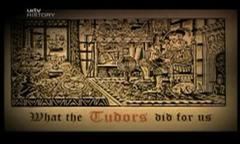7.4 /10 1 Votes7.4
7.5/10 TV Country of origin United Kingdom No. of series 1 Running time 23 minutes Final episode date 14 October 2002 | 7.4/10 IMDb Composer(s) David Mitcham Original language(s) English No. of episodes 4 (list of episodes) First episode date 23 September 2002 | |||||||||||||||||||||||||||||||||
 | ||||||||||||||||||||||||||||||||||
Similar What the Industrial Revolutio, What the Victorians Did for Us, Tudor Monastery Farm, What the Ancients Did for Us, Meet the Ancestors | ||||||||||||||||||||||||||||||||||
What the Tudors Did for Us is a 2002 BBC documentary series that examines the impact of the Tudor period on modern society.
Contents
Episode one: Seeing the World
Before Tudor times the image people had of their world was, well, rather dark and mysterious, but that was about to change thanks to some incredible adventures and remarkable discoveries.
Hart-Davis travels around Britain to introduce the idea and inventions of the Tudor Age in art, optics and exploration.
Episode two: The Thinkynge Revolution
One night in 1572 the Elizabethan astronomer Thomas Diggs saw a bright new star in the sky. It was a real shock; it shouldn't have been there. The Tudors believed that heaven, where God lived, was perfect and unchanging, and the appearance of this bright new star completely undermined their whole system of belief. But there was worse, that observation wasn't just quietly recorded it rapidly became common knowledge thanks to a really dangerous piece of high technology, the printing press. News of that star was just one of a load of ideas that were going to turn the Tudor world upside-down.
Hart-Davis travels around Britain to introduce the idea and inventions of the Tudor Age in science, literature and education.
Episode three: The Goode Lyfe
In a climate of domestic peace England prospered; wealthy Tudor homeowners could worry less about defence and more about comfort.
Hart-Davis travels around Britain showing how domestic life developed during Tudor times.
